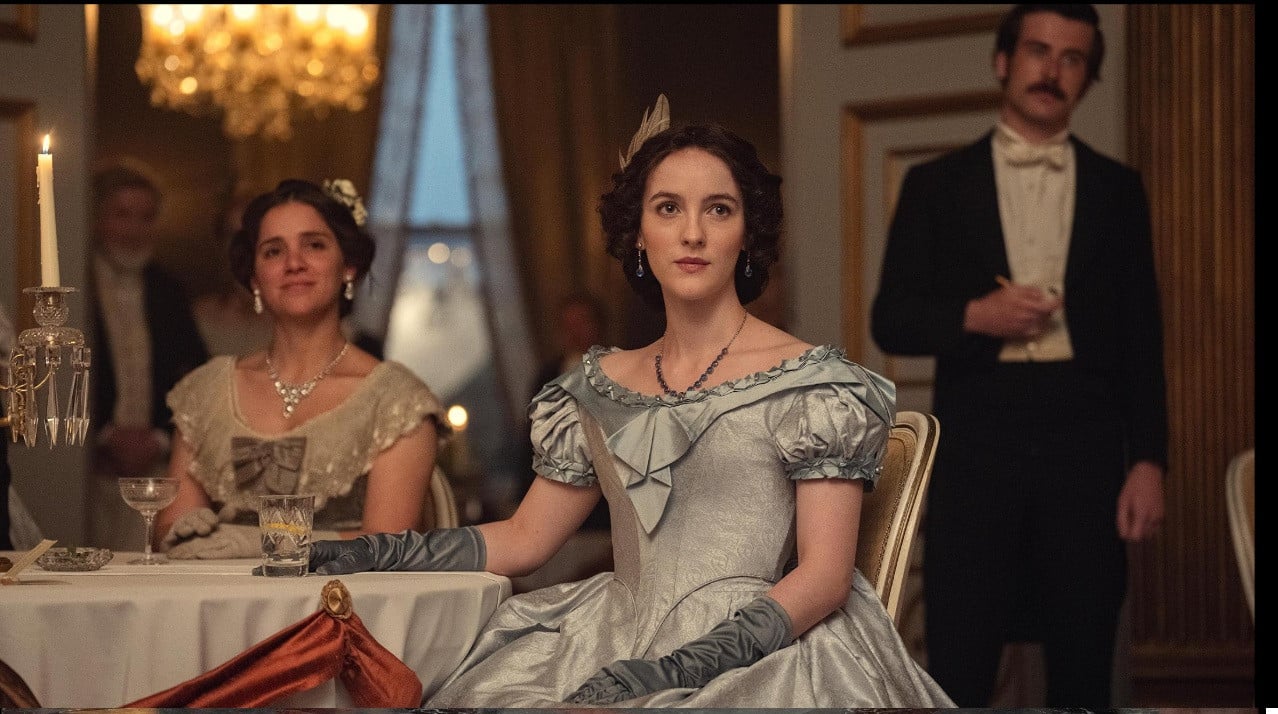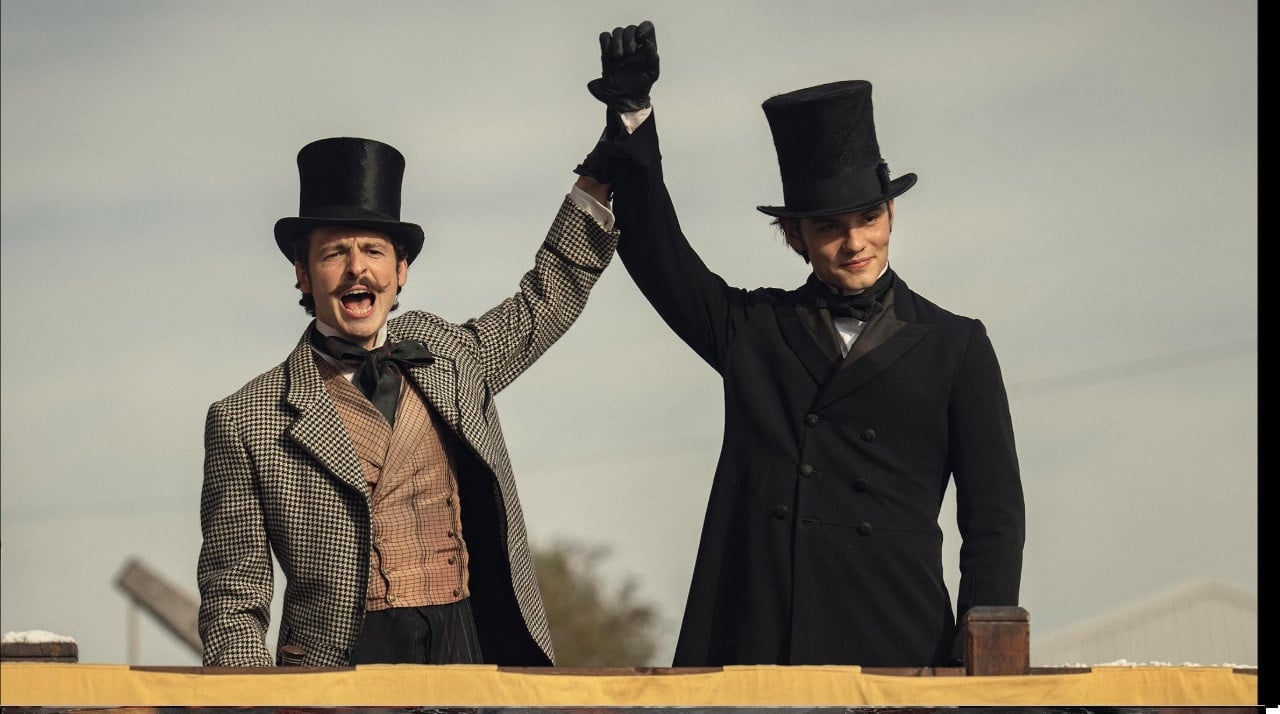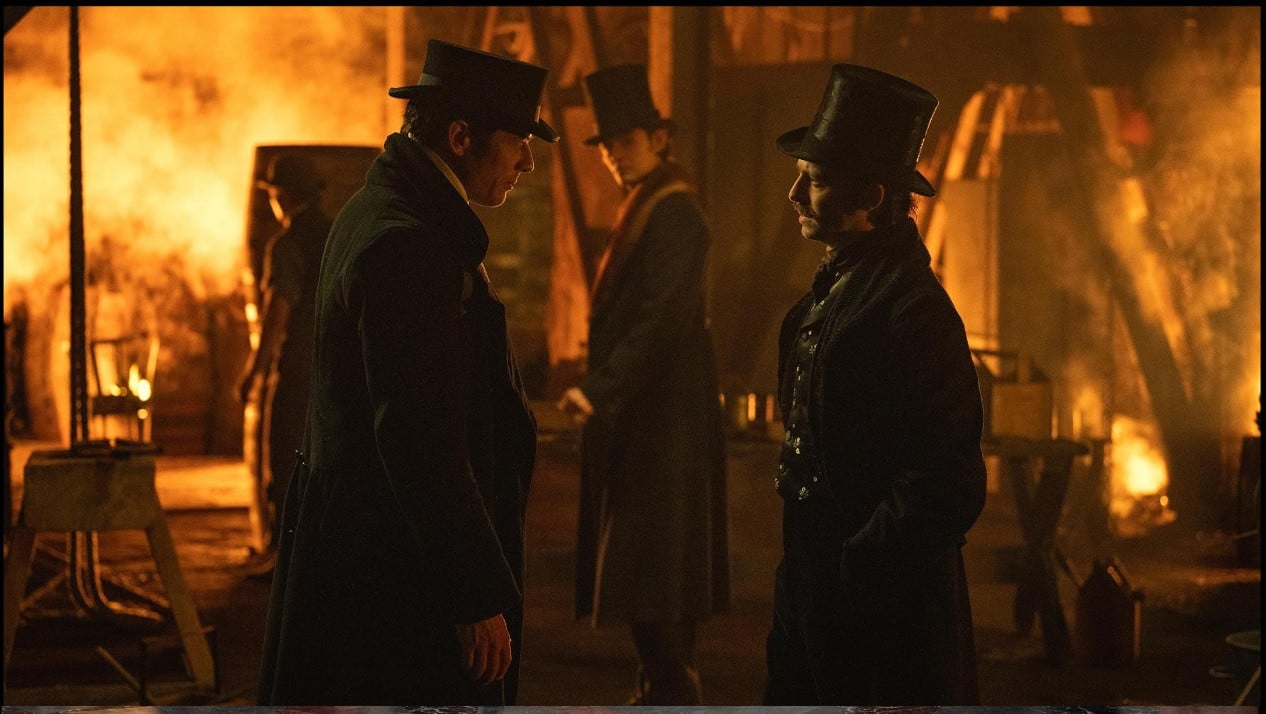PUBLISHED
November 16, 2025
KARACHI:
When Steven Knight set out to dramatise the making of Ireland’s most famous drink, few expected him to stir such potent contradictions. House of Guinness is not just a period drama about ale and ambition — it’s a story about class, faith, and the uneasy marriage between profit and conscience.
To create a soap opera around history on streaming platforms, elements such as sensationalism, and exaggeration of historical events, provocative or low-quality production values appealing to voyeuristic tendencies, and the development of over-the-top, scandalous narratives involving conspicuous consumption, excess, and the blurring of taste and vulgarity are used often with elements of resourcefulness from lower-income communities woven in. The goal is to attract a large audience through provocative content and a style that is intentionally sensational or shocking. Some call it trashy, but audiences lap it up.
Our taste for historical series with formulaic elements that make them extremely popular has developed over years with House of Cards, Downton Abbey, Bridgerton [and it’s off-shoots], Alias Grace, and Peaky Blinders to name a few shows.

The definition of “sensational historical drama” changed over time, with older shows fitting the criteria less perfectly than newer hits. Some were based on novels and some not. Many series and seasons later, Netflix and its audiences got exhausted with the content around the British Royalty and the Victorian era and moved on to Europe. We were dished out The Cook of Castamar and The Leopard which were liked and offered a European setting as opposed to British, but somehow didn’t make it to the charts sparking off a culture [and a cult] around them, the way the earlier shows did. Now with Netflix’ latest offering in this genre, we are back in Britain, in Ireland to be more precise.
The series is about the heirs to the Guinness brewing company in the late 1800s. The Guinness family still exists and continues to be one of Ireland’s wealthiest dynasties, with an estimated net worth of £856 million ($1.15 billion). The show is an eye-opener to their power and wealth for five generations and how dominant the brewery was back before the days of contract breweries and globalisation. But were they as eccentric as Knight (Peaky Blinders), the show’s creator depicts them? We know that Knight likes his characters to be vibrant.
The show however is making headlines because it fabricates much of the real family’s life to tell a more TV-friendly story. “What I had to do is take things that these family members did, things that they said, achievements they made, mistakes that they made, and use them as stepping stones,” says Knight in an interview. “I had to fill in the gaps myself.”

Every episode starts with the disclaimer ‘This fiction is inspired by true stories,’ which leaves the audience to decide what is true and what may not be. Audiences are generally used to a little bending of the truth with most historical fiction. Likewise, in House of Guinness, Knight invents a lot of criminal and political intrigue to add to the family’s story. He borrowed from his experience on Peaky Blinders to make inferences from historical texts, as well as conversations with living Guinness descendants. But not all of the Guinness descendants appear pleased with the result.
“All the characters come straight from a bingo card of modern clichés about rich people,” says Molly Guinness, Edward Guinness’s great-great-granddaughter, in an op-ed for The Times, calling Netflix drama “unjust.”
Apart from a few, most characters in the show are real historical figures from the Guinness dynasty and events largely took place in 1860s Ireland. According to history, Arthur Guinness, the Guinness founder, began brewing his iconic stout in the mid-18th century, securing the site of St James’s Gate in Dublin in 1759 at £45 per year for 9,000 years.
Soon he built a reputation for a darker beer called porter, which by the late-18th century was being produced on a scale that made Guinness one of Dublin’s largest breweries. The mid-19th century saw further leaps in scale, with steam power, industrial efficiency and strict quality control giving Guinness an edge over his competitors.

By the time of Sir Benjamin Lee Guinness’s death in 1868, with his funeral widely considered the most elaborate send-off ever held in Ireland, Guinness was Ireland’s largest brewery, and the Guinness family was one of the most wealthy and influential in Ireland.
The family was, as the show establishes as an important factor, Protestant. But even then, by the 1860s, the brewery was employing thousands of Dubliners, mostly Catholic. During the mid-1800s, Ireland – then under British rule – was still shaped by a ruling class known as the Protestant Ascendancy that had dominated Irish politics and its economy since the 17th century.
This group consisted largely of Anglo-Irish Protestants, such as the real Guinness family, controlled most of the wealth, land, and influence in Dublin. They held key positions in government, law and banking, even though they represented only a small minority of the population. Their dominance in many ways stemmed from longstanding restrictions on Catholics, and even though many such restrictions had been dismantled after Catholic Emancipation in 1829, social and economic effects lingered.
The Fenians were members of a late 19th-century Irish nationalist movement advocating for an independent Ireland, founded by Irish-American and Irish exiles in the 1850s. Comprised of secret organisations like the Irish Republican Brotherhood (IRB) in Ireland and the Fenian Brotherhood in America, they sought to achieve a democratic Irish republic through armed struggle. While their attempts at a rising in Ireland failed, they conducted raids into British Canada in the 1860s and 1870s. In the show, the Fenians were represented by characters like Ellen and Patrick Cochrane. The Fenian conflict with the Protestant Guinness family, who were seen as allied with the British, fuelled the political tensions and served as a backdrop for the show’s drama, which depicted the Fenians as supporters of the working class and potential threats to the brewing business.
On one side is the luxury life of the Guinness protagonists, their fancy butlers, maids, gowns, well-bred horses, fancy carriages and lavish meals and means, in stark contrast with rural Ireland, on the other side, barely a decade on from one of the most devastating famines in history, and still suffering its effects.
“As potato crops failed again and again from 1845–51, at least one million people died, many in lonely, hideous and degrading conditions,” writes historian Padraic X Scanlan in BBC History Magazine. “At least 1.5 million more emigrated.”
“The people of Ireland had endured periods of starvation before, but they had encountered nothing on the scale of what we remember today as the Great Famine,” says Scanlan.

The situation was made worse by inconsistent intervention by the British government. Though there were some relief attempts under the governments of both Robert Peel and his successor Lord John Russell, the bruising reality was that homegrown corn and other healthy food stocks continued to be transported out of Ireland for English markets, even during the unusually long and harsh winter of 1846/47, when death tolls in Ireland soared.
House of Guinness portrays the lingering effects of the Great Famine, such as mass emigration and economic hardship, leading to political unrest and push for Irish independence. Throw in some water, malted barley hops, yeast, copper, oak fire, family, money, rebellion, power with elegant ballroom dances, weddings, palace intrigue, love, revenge, painful poverty, and challenges of persecution of individuals based on sexual orientation, and you have a show that audiences will lap up, and eight episodes are not enough to satiate the appetite.
Different from chamber orchestra compositions of the Downton Abbey or even the contemporary themes mixed in as seen in Bridgerton, the sound track of this series is simply amazing and worth streaming on its own. British composer Ilan Eshkeri (Layer Cake and SAS: Rogue Heroes) known for his concert music, films scores and artist collaborations worked alongside Steven Knight to transform the period drama into something modern and viscerally emotional using a variety of compositions from dramatic crescendos to Celtic rock. The soundtrack weaves tradintional Irish folk melodies with darker, more contemporary songs that reflect the political tensions simmering beneath Victorian Dublin’s surface. The sound track represents Knight’s vision of 1870’s Dublin, for the music embodies swagger, rebelliousness, raw and loud energy, and the fight against oppression, tyranny, restrictions and limitations.
Knight also uses a more contemporary style of captions boldly written in caps across the screen for names of places and dates as well as for astounding comparisons and conversions of money value from then to now.
The Netflix series may not have won over the entire Guinness family just yet, but it’s winning with viewers. After the first season premiered, Netflix locked down Steven Knight to a deal for two seasons of a Peaky Blinders sequel and three more seasons are in the offing to take the Guinness family right up to the 1960s. Knight doesn’t seem to be leaving the 1800s Dublin anytime soon.

